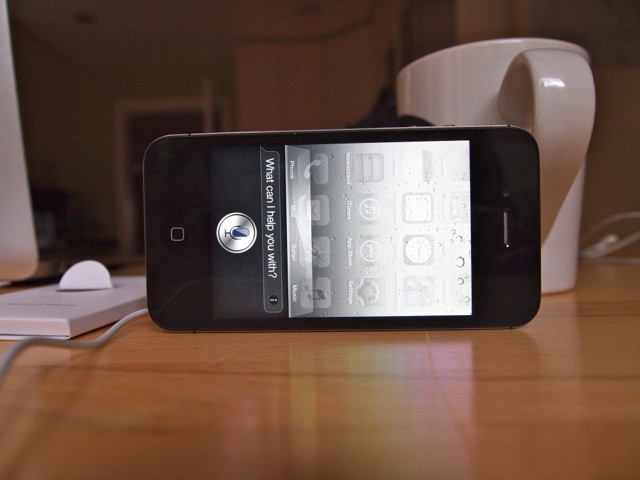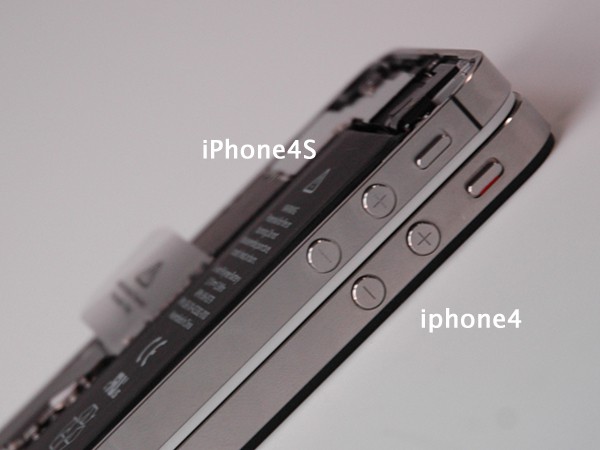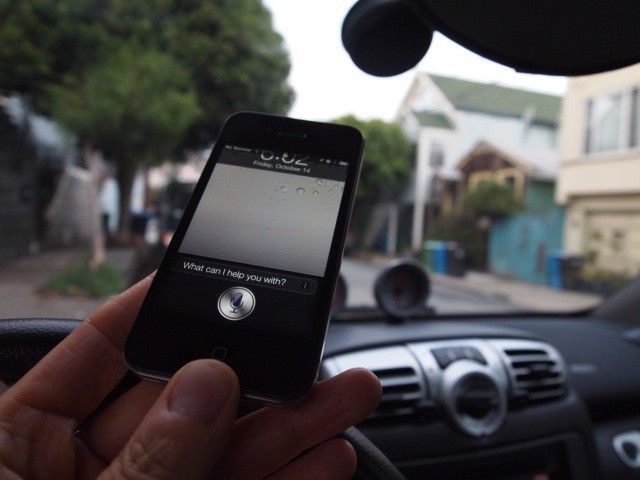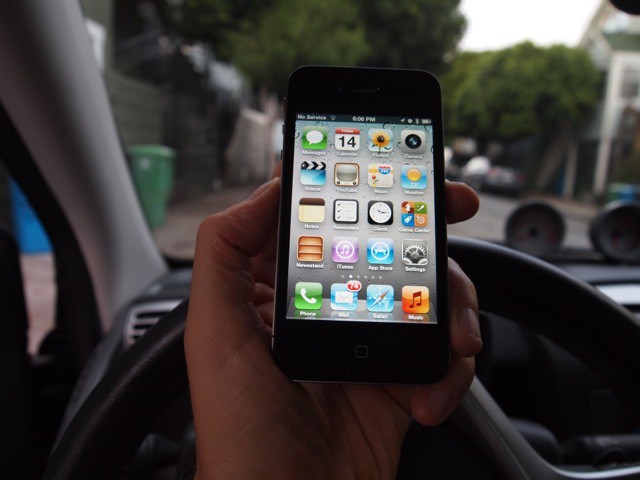Hardware
The iPhone 4S is the still the phone you’ve been used to holding if you previously carried an iPhone 4. The iPhone 4S shares the same stark and striking design of its predecessor — it is glass on the front and back with a stainless steel band holding it all together with two screws. It feels solid in your hand and oddly a bit heavy too, but not much or any more than the iPhone 4 did. It weighs only 4.94 ounces (140 grams).
It fits well in your hand. You can use it with your thumb while holding it in one hand. The screen size perfect for that. Sure Android users can boast about their big screens, but seriously you almost need two hands to work one of those — or seriously long fingers. Like Freddy Krueger’s claws or Edward Scissor Hands.
Design and Build Quality
One of the biggest knocks on the 4S is that it looks almost identical to the iPhone 4.
This is a good thing.
To paraphrase Sir Lancelot in Excalibur, the best iPhone has been bested. The iPhone 4 was the best iPhone to date. It’s as tough as nails, even though it’s made of glass. I’ve dropped my iPhone 4 multiple times, a couple of times on my bike. I watched in horror as it bounced across the pavement. But it’s got just a few nicks and a small crack near the camera. It’s one tough mother.
It’s also just the right size for one-handed use; it slips easily into a pocket; and cleans up nicely with some spit and rubbing on your pants. Everything is tough and durable — the buttons, the screen, the dock connector, the speakers and mic. Why mess with success?
The iPhone 4S is changed where it counts — inside.
The controls, metal frame, and glass exterior are practically the same as the iPhone 4 with a few minor differences. The button for ring/silent has been moved slightly (It has the same exterior antenna configuration as the Verizon version of the iPhone 4). Although these changes are great for antenna reception, it also means that many iPhone 4 cases won’t fit the iPhone 4S properly.
New Hardware Inside
The internal components of the iPhone 4S are completely different from the iPhone 4, starting with a powerful new A5 processor. The A5 is the same dual-core chip that makes the iPad 2 so much fun to use (but it’s running at about 800MHz, just a tad slower than the 1GHz clock speed of the iPad 2).
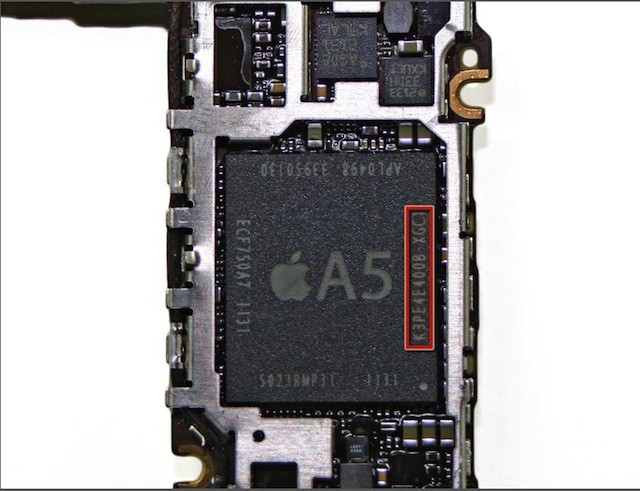
Apple is mum about the subject, but the iPhone 4S is notably faster than the iPhone 4 in many ways. Launching apps, using the camera, rendering web pages all feel much faster.
The only thing I was disappointed about was that it has only 512MB of on-board memory for applications and not the 1GB that everyone, including me, was hoping for. On the storage side the addition of a 64GB model doubled the amount of available storage available on the iPhone 4, which shipped with a maximum capacity of 32GB.
Apple also claims that the A5 inside of the iPhone 4S delivers up to two times more power and up to seven times faster graphics than it’s predecessor. We haven’t yet tested these claims, but so far the games, apps, and other graphic intensive tasks I’ve thrown at the iPhone 4S look great. I could feel the difference between the iPhone 4S and the iPhone 4 immediately.
Antenna Design
The antenna is another big change you can be grateful for. According to word on the street last year’s “Antennagate” is a thing of the past. The iPhone 4S takes the new antenna design a step further by implementing a method of intelligently and instantly switching, in real-time, between the two new redesigned exterior antennas. This even works while there is a call in progress.
I tried gripping the phone several different ways and even wrapping it with both hands. In my office, which has sketchy reception, it never lost reception no matter how I held it. So maybe the “Your holding it wrong!” jokes are a thing of the past. We’ll see. As the iPhone 4S makes it into the hands of more users as each day passes, we’ll see if things are looking good in on the reception front.
Cellular Wireless Technology
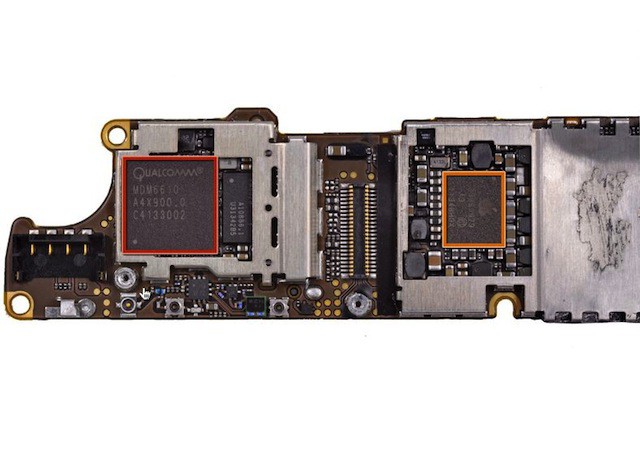
The cellular modem that supports wireless networking is a quadband UMTS / HSDPA / HSUPA (850, 900, 1,900, 2,100MHz) and quad-band GSM / EDGE (850, 900, 1,800, 1,900MHZ) device. It also offers a dual-band CDMA EV-DO Rev. A (900, 1,900MHz) at the same time. The iPhone 4S will support 3G data technology on practically every carrier globally. The AT&T model is allegedly the fastest (I’ve yet to test this, but I don’t doubt it) since it offers the closest thing to 4G — 14.4Mbs HSPA+ services.
AT&T would like to call this 4G and rumors state that they want the iPhone 4S to display that on its screen instead of 3G, but it doesn’t look like Apple is going to buy into that just yet. If you would like a good explanation of HSPA+ and when it is real 4G or not check out this article.
Bluetooth 4.0
The iPhone 4S uses Bluetooth 4.0 wireless technology — a version of Bluetooth that is designed specifically for small, battery-powered devices. It needs almost no power to run. One example: the Nike+ running sensors for use with iPods and the iPhone. This technology is also included in the new MacBook Air released this past summer. Although this technology is new and not widely adopted, it is nice that Apple included it in the iPhone 4S. It can also wake up Siri.
Next: Screen, Battery and the awesome new Camera
![Thanks To Siri, The iPhone 4S Is A Serious Upgrade [CultofMac’s Big Fat Mega Review] OLYMPUS DIGITAL CAMERA](https://www.cultofmac.com/wp-content/uploads/2011/10/iPhone_4S_review_c1.jpg)
